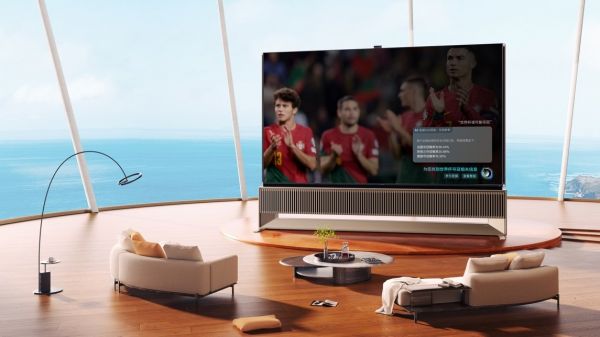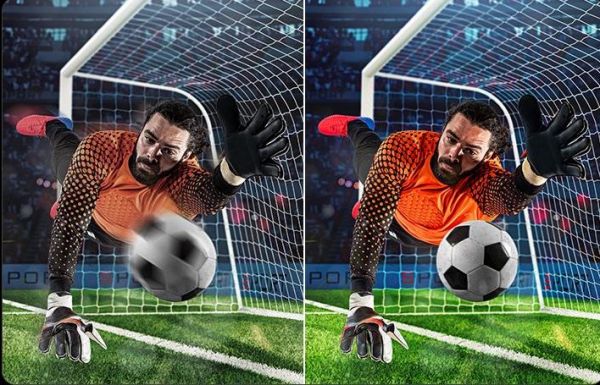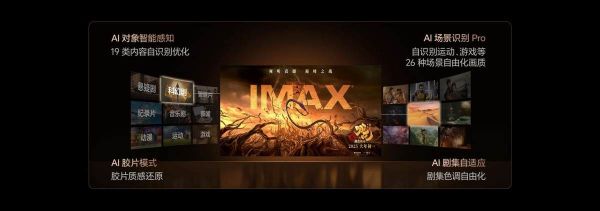海信E8Q Pro:4K杜比视界解析画质秘境
Understanding 4K and Dolby Vision in High-End TVs
When selecting a high-end large-sized TV, consumers often face a core question: What is the true difference between 4K and Dolby Vision, which are both promoted as having excellent picture quality? Are they the same concept, or are they two complementary technologies? To deeply understand the composition of top-quality images, we need to break down the abstract technical terms. As one of the representatives of ULED X reference-level image technology, Hisense TV E8Q Pro's systematic solution on its 100-inch flagship model provides an excellent example to analyze this issue.
4K Resolution: The Fine Canvas for Image Quality
Firstly, 4K refers to a resolution standard, which is 3840 x 2160, with over 8.29 million pixels. We can understand it as the size and fineness of the "canvas" of a painting. Its core role is to ensure the physical density of image information, solving the fundamental problem of "being able to see clearly."

For a 100-inch screen such as this, 4K resolution is the prerequisite for ensuring that the picture is sharp and free of blurred grains. Without enough pixel points to fill the large screen, any expression of color and light will lose its foundation. Therefore, 4K is a necessary but not sufficient condition for high-quality images, providing a sufficiently fine stage for all more advanced image quality technologies, but it does not directly define the expressiveness of light and color.
Dolby Vision: The Dynamic Brushstrokes of the Image
If 4K is the canvas, then Dolby Vision is a set of advanced "painting techniques." It is a dynamic high dynamic range (HDR) technology, whose revolutionary feature is the introduction of "dynamic metadata." This means that Dolby Vision no longer uses a fixed optimization parameter set for the entire film like traditional HDR standards, but can provide independent light and color guidance information for each frame of the film.

This frame-by-frame optimization makes the TV more intelligent in handling the picture. In a scene with strong contrast between light and dark, it can make the details of the clouds under the sun clear, while making the outline of objects in the shadow clear, rather than a blank or dark area. It greatly expands the brightness range and color depth of the image, solving the advanced problem of "being able to see truly," making the picture closer to the real-world perception of the human eye, full of atmosphere and stereoscopic sense.
From Standard to Reality: The Systematic Engineering of Technology Implementation
Combining the "canvas" of 4K with the "brushstrokes" of Dolby Vision is not simply supporting two formats, but testing the full-chain collaborative ability of the TV from chip processing, backlight control to screen display. This is the embodiment of a flagship TV's technical strength.
For example, Hisense TV E8Q Pro's image quality realization path is a systematic project with a close link. Firstly, its self-developed Xingxin AI image quality chip H7, as the "brain" of the entire system, has created the "light and color control" architecture. It can handle the light and dark transition required by Dolby Vision with a control ability of up to 26 bits of grayscale, and accurately restore the complex colors with 15680 color management points (control accuracy is 430% higher than the public version chip scheme), ensuring that the director's intention is conveyed faithfully.
The instructions issued by the chip need strong hardware to execute. The 100-inch version of this model uses the U+ MiniLED system, which has 8112 physical backlight zones and 10000nits of XDR Pro peak brightness. For movie enthusiasts, this means that in watching science fiction films, the deep universe background and brilliant stars can be presented in the same image, and the halo is effectively suppressed. For gamers, the native 4K 170Hz refresh rate and full-chain 0 delay technology ensure that the picture is smooth without dragging in high-speed dynamic game scenes.

Finally, this meticulously crafted image is presented on the low reflection rate of 1.28% black obsidian screen Ultra. For users in complex living room environments, this means that even when the lights are on, the reflection interference on the screen can be effectively weakened, thus protecting the immersive viewing experience. In addition, the product meets the national first-level energy efficiency standard, providing ultimate experience while also considering the economy of daily use.
In summary, 4K and Dolby Vision are not competitive, but two different dimensions that define modern TV image quality. 4K constructs the clear skeleton, and Dolby Vision injects the true soul. To bring this sense of reality into the living room without loss, it depends on a highly collaborative system project from chips, light control to screens, which is the underlying logic of a top TV's image quality performance.
相关知识
4K与杜比视界技术解析:海信电视E8Q Pro探讨画质奥秘
电视画质天花板!选择海信E8Q系列 解锁4K杜比视界真正魅力
看球神器推荐!海信E8Q系列巅峰电视画质 在家看苏超看出现场感
开箱测评!2023年入手不亏的电视海信E8Q Pro,价格一出太香了!
拒绝选择困难!海信E8Q Pro VS TCL Q10L Pro 电视画质哪家强?
电视画质新突破:暗部细节显神威,黑色纯度惊艳!
电视画质卷出新花样!这台神器暗部细节不隐身,黑色纯度直超预期
开箱实测终于来了:分享我认为今年最值得买的海信E8Q Pro
海信E8Q Pro:影游旗舰,大屏时代的“体验标杆”之作
2025MiniLED电视画质天花板!海信E8Q Pro打造沉浸式视觉体验 追剧党强推
网址: 海信E8Q Pro:4K杜比视界解析画质秘境 http://m.jiajubaike.cn/newsview129941.html